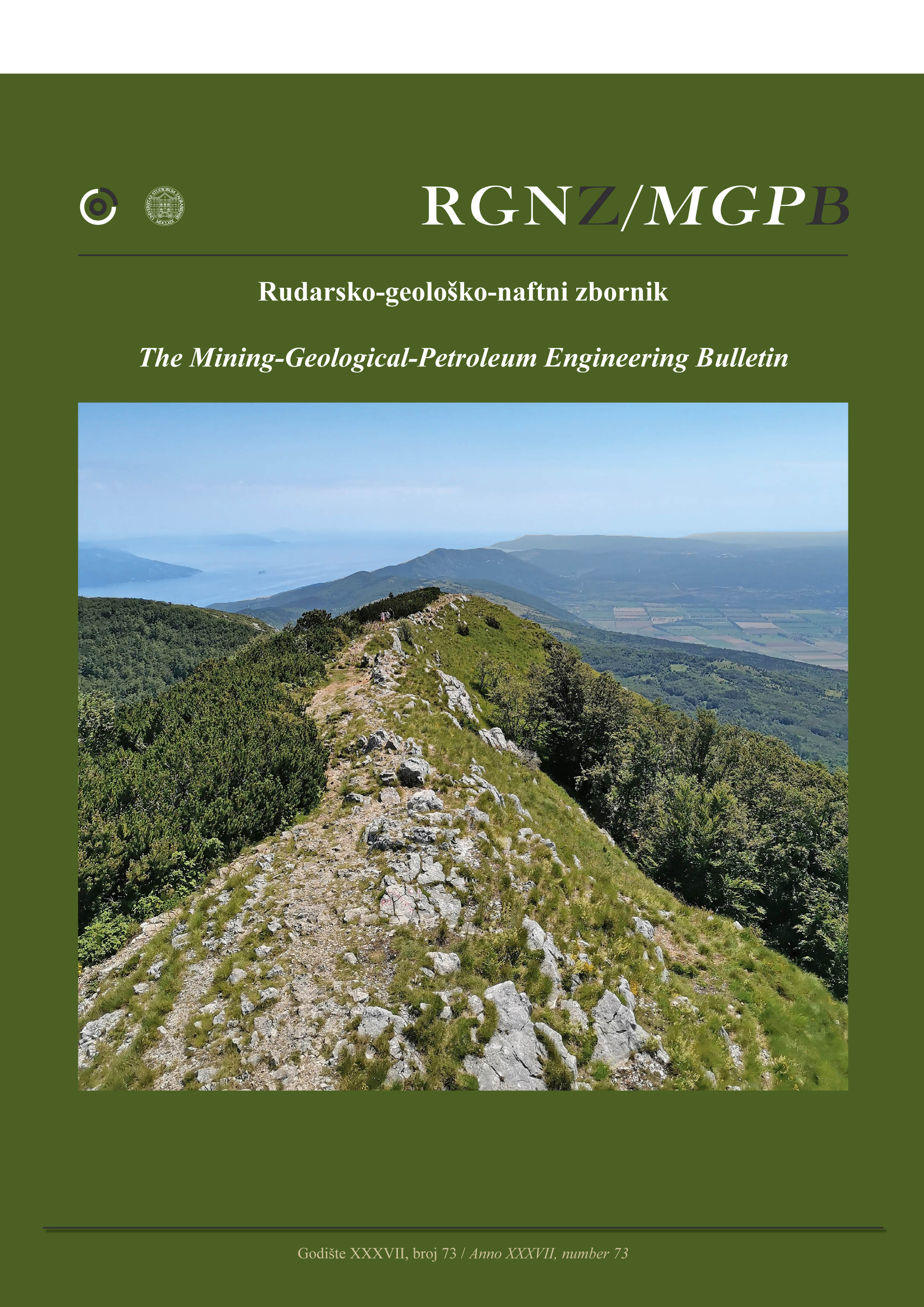Development of Cyclic Injection Schemes in Hydraulic Fracturing
DOI:
https://doi.org/10.17794/rgn.2025.2.9Keywords:
acoustic emission, fracture, injection scheme, true triaxial test , cyclic hydraulic fracturingAbstract
Due to the increasing use of hydraulic fracturing in the exploitation of geothermal energy and the increase in the extraction of hydrocarbon resources, the depth and scale of this operation has expanded, which has led to the creation of special requirements and challenges. One of the most important challenges is the creation of earthquakes caused by the triggering of faults in the region. In order to solve this problem, various studies are being done. In the current study, based on the aforementioned points, three proposed methods of cyclic injection under the triaxial stress regime have been investigated and assessed to simulate the operation as accurately as possible. Stepwise injection (SI), stepwise cyclic injection (SCI) and stepwise progressive cyclic injection (SPCI) are three proposed methods that the results of the breakdown pressure, as well as the different parameters of acoustic emission events have been studied. The experiments were carried out by a laboratory true triaxial loading device. The results confirm the reduction of the breakdown pressure level in all three proposed methods. Stepwise injection has the highest reduction in fracture pressure compared to the test time. The results of the stepwise cyclic injection method show a decrease in the amount of energy released during the failure, so it can be considered in reducing the risk of earthquakes. Due to the combined effect of reducing the breakdown pressure level and creating a wider fracture network, the stepwise progressive cyclic injection method possibly has a better efficiency in the application of geothermal resource exploitation.
Downloads
Published
Issue
Section
License
Copyright (c) 2025 Mohammad Hossein Arabnejad, Morteza Ahmadi

This work is licensed under a Creative Commons Attribution 4.0 International License.
Creative Commons-BY
Authors who publish with this journal agree to the following terms:
In agreeing this form, you certify that:
- You read the ethical codex of the RGN zbornik available at journal web.
- You submitted work is your original work, and has not previously been published and does not include any form of plagiarism.
- You own copyright in the submitted work, and are therefore permitted to assign the licence to publish to RGN zbornik.
- Your submitted work contains no violation of any existing copyright or other third party right or any material of an obscene, libellous or otherwise unlawful nature.
- You have obtained permission for and acknowledged the source of any illustrations, diagrams or other material included in the work of which you are not the copyright owner.
- You have taken due care to ensure the accuracy of the work, and that, to the best of your knowledge, there are no false statements made within it.
- All co-authors of this submitted work are aware of, and in agreement with, the terms of this licence and that the submitted manuscript has been approved by these authors.
Publication licence
You retain copyright in your submitted work, according to journal license policy (CC-BY). By signing this form you agree that RGN zbornik may publish it under the publication licence. In summary the licence allows the following:
Anyone is free:
- To copy, distribute, display, and perform the work.
- To make derivative works.
Under the following conditions:
- The original author must always be given credit.
- The work may not be used for commercial purposes.
- If the work is altered, transformed, or built upon, the resulting work may only be distributed under a licence identical to this one.
Exceptions to the licence
In addition to publishing the work printed under the above licence, RGN zbornik will also enable the work to be visible online.
The journal editorial can change the licence rules anytime but it cannot retroactively restrict author(s) rights.


